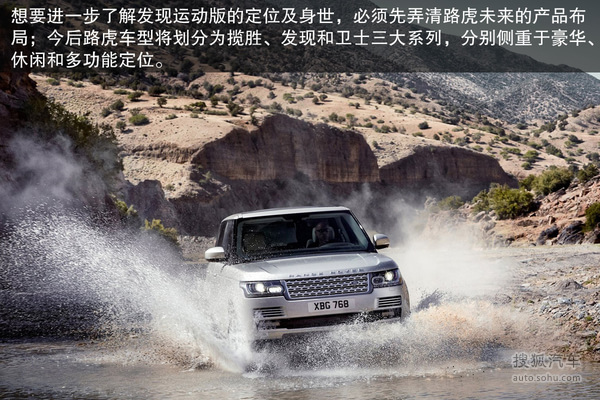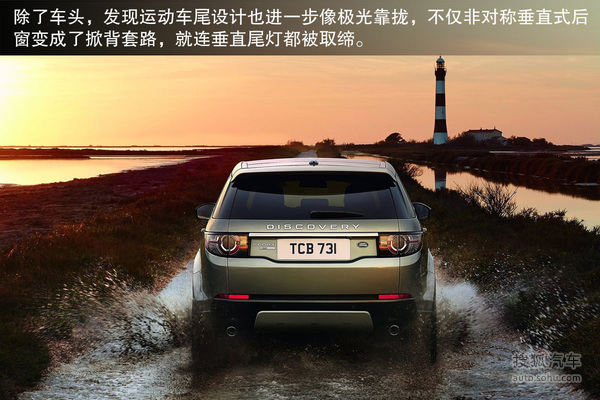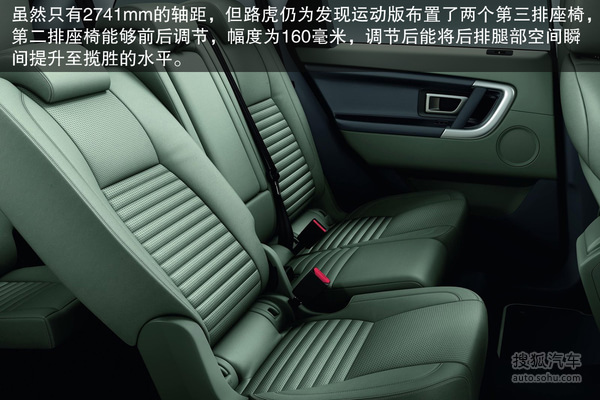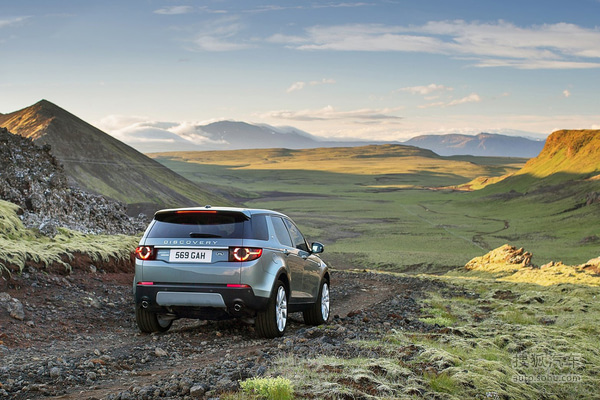The Land Rover Freelander will be killed off early next year, and replaced by this new Land Rover Discovery Sport, a seven-seat SUV that will kick-start a new family of models sold with the Discovery name.
Prices will start from £32,395, slightly up on the current, ageing model, but Land Rover says the additional cost is justified by the design, technical and practical improvements made on the Discovery Sport. Rivals include the Audi Q5 (from £31,370), Hyundai Santa Fe (£27,800) and Volvo XC60 (£31,260).
The Discovery Sport has been designed to be the most versatile car in its sector, yet retain the premium quality for which Land Rover is known. It is 9cm longer than the Freelander, at 459cm, 7cm of which has been used to make the middle row of seats truly spacious.
Behind the wheel
The only engine available initially is a 188bhp 2.2-litre diesel engine badged as the Discovery Sport SD4. It produces 310lb ft of pulling power and gives the car a 0-60mph time from 8.4sec. This model is available only with four-wheel drive, but nonetheless average fuel economy is 46.0mpg while CO2 emissions start at 162g/km, depending on whether the engine is linked to the nine-speed automatic gearbox or six-speed manual. The current Freelander powered by the SD4 engine averages 40.4mpg and emits 185g/km.
However, the SD4 powertrain will be replaced as soon as mid-2015, by a more efficient turbocharged diesel called eD4. This new engine, part of Jaguar Land Rover’s new Ingenium engine range, will emit from 119gkm of CO2, suggesting an average economy figure of around 47mpg. It will be available with a nine-speed automatic gearbox or six-speed manual. This power unit will be available with two- or four-wheel drive models.
Land Rover describes the Discovery Sport as being ‘fun to drive and incredibly comfortable’, thanks largely to the high-strength but lightweight steel-and-aluminium body structure and cutting-edge suspension set-up. The bodyshell is largely shared with the Range Rover Evoque, while the space-efficient suspension design is said to give controlled on-and off-road ride and handling benefits as well as freeing up space for the rearmost seats, boot, and a spacesaver spare wheel.
Additionally, Land Rover says the Discovery Sport has been optimised for use off-road. In particular, it highlights the car’s 60cm wade depth and the four settings of its Terrain response system: general, grass/gravel/snow, mud and ruts and sand. Other standard off-road aids available include hill descent control, roll stability control, dynamic stability control, traction control and engine drag torque control.
The steering is also electrically power assisted, reducing fuel consumption and allowing the introduction of an option for a self-parking function where the car steers itself into a parallel parking space or parking bay.
On the inside
The Discovery Sport’s designers say they have worked to give the car a sporty look, disguising its greater length by pushing each wheel towards its corners and creating a rising line from the bonnet that steps up before going across the car and sitting it relatively low to the ground.
The design is also fairly aerodynamic, which helps performance, fuel economy and refinement.
Land Rover describes the interior seating arrangement as 5+2 rather than a full seven-seater, because the rearmost seats are for occasional use only; they’ve been designed around an average 15-year old.
As standard the middle row of seats can be reclined, slide back and forward by 16cm, and can be split 60:40. They are also 5cm higher than the front seats, to give passengers a better view.
Climate control for the front two rows of seats is standard, while buyers can specify air-con for the rearmost seats, as well as additional 12V and USB sockets so that passengers can use their electronic devices.
Boot space is an impressive 195 litres with all seats up, 830 litres with the third row down and 1698 litres with the second and third rows down. The boot opening also sits 5cm lower, making it easier to load and unload, and there is space for a full size spare tyre under the boot floor.
The Discovery Sport has only five seat if it is fitted with the optional Tow Pack, which raises the towing capability from 2200kg to 2500kg.
The four trim levels are called SE, SE Tech, HSE and HSE Luxury. The highlights of SE include half-leather, climate control, 18-inch wheels, rear parking sensors and heated seats. SE Tech costs £1500 more and adds a touch-screen sat-nav, front parking sensors and a powered tailgate. HSE adds a further £3600 for full leather, a panoramic roof, reversing cameras and 19-inch wheels, while HSE Lux adds £3600 for a premium leather, climate-controlled seats and the automatic parking function.
New technology
In the centre of the Discovery Sport’s dash there’s a new eight-inch screen that uses phone-style dragging, scrolling and swiping functions to move between functions and screens. The main screen controls functions such as the audio, climate, telephone and navigation controls, while other options including turning the car into a wi-fi hotspot or displaying off-road or economy data. Sat-nav is standard on SE Tech models and above.
The Discovery Sport’s infotainment system is also optimised for use with smartphones. As an option, downloadable apps will allow owners to perform tasks such as summoning the emergency or breakdown services through the touch-screen, or to track their car if it is stolen. Also, two phones can be linked at once; one to make calls and one to stream music from.
In addition, voice control can be used to operate the sat-nav, select radio stations, dial phone numbers and access the phonebook.
Buyers have a choice of three audio systems: SE models get a 10-speaker system, while HSE models have a 11-speaker system. Buyers also have the option of a more advanced infotainment system, which includes a more advanced sat-nav system, a dual-view screen system, so a passenger can, for instance, watch a DVD while the driver sees the sat-nav.
Among the safety features are ABD automatic braking, which uses sensors to detect potential impacts and automatically apply the brakes to stop the car from speeds up to 32mph, or reduce impact speeds at up to 50mph. The same system also gives audio and visual warnings if it detects a possible cause of a collision, such as a row of stationary traffic. Additional to the standard roster of airbags, the Discovery Sport also features a new pedestrian airbag system which triggers from the base of the windscreen when the car detects an significant front impact at between 15 and 30mph.
Other standard driver assistance equipment includes automatic windscreen demisting function, automatic headlamps and rain-sensitive wipers. Options include trailer stability assist, high beam assist, lane-departure warning, traffic sign recognition and parking sensors.
How do I buy a Land Rover Discovery Sport?
The Land Rover Discovery Sport goes on sale on January 22.
Initial demand is expected to be strong because of the traditional appeal of new Land Rover models, plus the inherent improvements over the outgoing Freelander. However, the decision to launch the car with an engine that will be replaced around six months after its launch is likely to prompt many buyers to wait for the more efficient unit, despite pricing details for that car not yet being available. Resale values and running costs of the newer engine will also likely be much better.
Target Price discounts won’t be available until the car goes on sale, but if customers do delay orders, expect discounts to be available on what is still a significantly more efficient car than the outgoing Freelander that it replaces.














































































